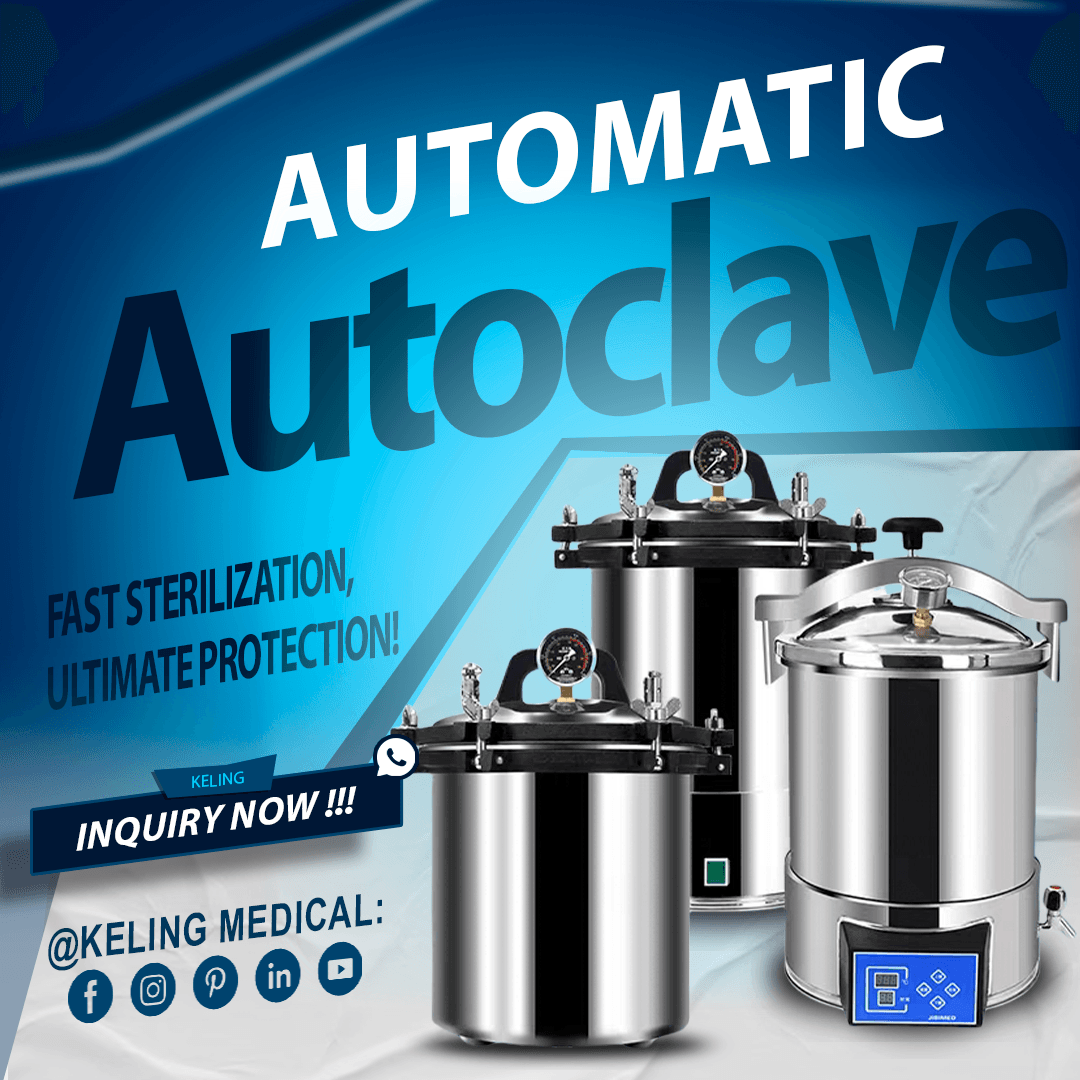
Pharmaceutical manufacturing relies on autoclaves to sterilize equipment alongside containers and materials. Here’s a detailed look at their applications:
معدات التعقيم: Pharmaceutical production equipment including fermenters, mixers, and filling machines requires sterilization to eliminate the risk of contamination. Autoclaving achieves sterilization by removing all microbial life from all surfaces.
Equipment undergoes cleaning and disassembly when needed before being placed in the autoclave to undergo sterilization.
Sterilized equipment protects drug production processes from contamination.
Sterilizing Containers and Closures: The sterilization of containers like vials and bottles along with closures such as caps and stoppers is essential before usage to maintain drug purity and prevent contamination. Autoclaving serves as a dependable approach to achieve complete sterility.
Containers and closures go into autoclave-safe trays or bags before being sterilized with high temperature and pressure.
Sterilization of containers and closures protects pharmaceutical products by maintaining their safety and stability.
Sterilizing Culture Media: In drug development, it is essential to sterilize culture media for microorganism growth to avoid contamination. Autoclaving represents the best available technique to ensure complete sterility of media.
Culture media are sterilized by placing them in autoclave-safe containers and exposing them to 121°C for 15–20 minutes.
Sterile media enable desired microorganisms to grow without contamination interference.
إزالة التلوث من النفايات الخطرة بيولوجيًا: All biohazard waste from pharmaceutical facilities including used culture plates and contaminated substances requires decontamination before disposal. Autoclaving procedures confirm that materials can be safely handled and discarded afterward.
The autoclave-safe bags containing waste undergo sterilization through exposure to high temperature and pressure.
Decontaminating waste materials minimizes potential exposure to dangerous pathogens.
Using autoclaves presents multiple benefits to pharmaceutical production.
Ensures Drug Safety: The use of autoclaves allows pharmaceutical manufacturers to sterilize equipment and materials effectively which minimizes contamination risks while maintaining drug safety.
الامتثال للوائح التنظيمية: Pharmaceutical manufacturers must adhere to rigorous sterilization standards. Autoclaves help meet these regulatory requirements.
فعالة من حيث التكلفة: Autoclaves provide a budget-friendly sterilization method while minimizing the use of disposable materials and chemical sterilants.
صديقة للبيئة: The autoclaving process minimizes dependence on single-use plastics and chemical sterilants thus becoming an eco-friendly sterilization method.
Autoclaves produce significant advantages but also present several challenges when used in pharmaceutical applications.
غير مناسب للمواد الحساسة للحرارة: Certain pharmaceutical materials including specific plastics and biologics should not undergo autoclaving because this process leads to degradation or reduced efficacy.
مستهلك للوقت: The autoclaving process involves loading and sterilization followed by cooling which tends to slow production workflows.
متطلبات الصيانة: Regular maintenance of autoclaves ensures they function correctly while helping to avoid operational failures.
Follow these best practices to achieve maximum autoclave performance in pharmaceutical manufacturing settings.
التحميل المناسب: Organize the materials inside the autoclave to permit free steam flow. Filling the autoclave chamber beyond its capacity leads to inadequate sterilization of contents.
استخدام صواني وأكياس التعقيم: Protect equipment and materials from contamination after sterilization by placing them in sterilization trays or bags.
معلمات دورة المراقبة: Ensure proper sterilization by consistently monitoring autoclave cycles’ temperature, pressure, and duration.
صيانة المعدات: Regular cleaning and inspection of the autoclave helps prevent malfunctions and maintains its consistent performance.
Pharmaceutical autoclaves play an essential role in maintaining the sterility of drug production equipment and packaging materials. Pharmaceutical manufacturers who maintain their equipment according to best practices can attain proper sterilization while meeting regulatory compliance requirements.
Can I autoclave plastic vials? It depends on the type of plastic. Polypropylene vials are often autoclave-safe, but always check the manufacturer’s instructions.
How often should I test my pharmaceutical autoclave? اختبر الأوتوكلاف أسبوعيًا باستخدام المؤشرات البيولوجية (اختبارات الأبواغ) للتحقق من فعالية التعقيم.
ما الفرق بين التعقيم على دفعات والتعقيم المستمر؟ تقوم أجهزة التعقيم على دفعات بمعالجة العناصر في أحمال منفصلة، بينما تسمح النماذج المستمرة بالتعقيم المتواصل، وهي مثالية للإنتاج بكميات كبيرة.

Introduction Autoclave machines used in hospitals are one of the most important investments in healthcare infrastructure, serving as the first line of defense against healthcare-associated infections. Sophisticated sterilization equipment is

تُستخدم عملية التعقيم بالأوتوكلاف كممارسة تعقيم أساسية في المنشآت الطبية والمعملية والبحثية لحماية الأواني الزجاجية والأدوات من خلال التعقيم الفعال. يقضي البخار عالي الضغط على مسببات الأمراض خلال هذه العملية

تُستخدم عملية التعقيم بالأوتوكلاف كممارسة تعقيم أساسية في المنشآت الطبية والمعملية والبحثية لحماية الأواني الزجاجية والأدوات من خلال التعقيم الفعال. يقضي البخار عالي الضغط على مسببات الأمراض خلال هذه العملية

تُستخدم عملية التعقيم بالأوتوكلاف كممارسة تعقيم أساسية في المنشآت الطبية والمعملية والبحثية لحماية الأواني الزجاجية والأدوات من خلال التعقيم الفعال. يقضي البخار عالي الضغط على مسببات الأمراض خلال هذه العملية

تُستخدم عملية التعقيم بالأوتوكلاف كممارسة تعقيم أساسية في المنشآت الطبية والمعملية والبحثية لحماية الأواني الزجاجية والأدوات من خلال التعقيم الفعال. يقضي البخار عالي الضغط على مسببات الأمراض خلال هذه العملية
تُستخدم عملية التعقيم بالأوتوكلاف كممارسة تعقيم أساسية في المنشآت الطبية والمعملية والبحثية لحماية الأواني الزجاجية والأدوات من خلال التعقيم الفعال. يقضي البخار عالي الضغط على مسببات الأمراض خلال هذه العملية